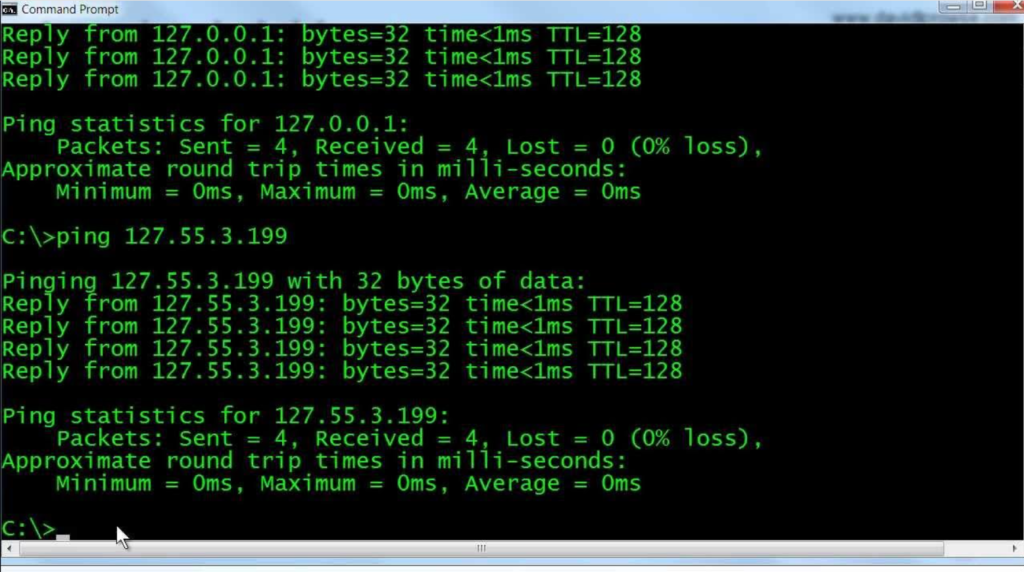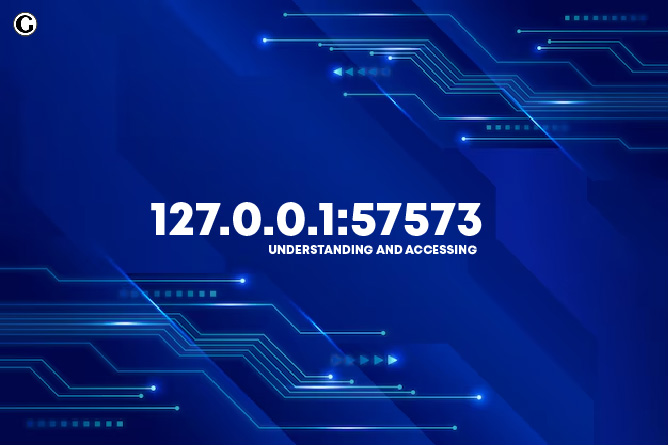In the world of networking and software development, one of the most fundamental concepts is the use of IP addresses for communication between devices. Among these, 127.0.0.1 holds a special place as it refers to the loopback address, commonly used for local testing and development. When paired with a specific port, like 127.0.0.1:57573, it can serve specific purposes in local server setups, debugging, or accessing particular services. In this article, we will explore 127.0.0.1:57573, understand its purpose, and provide a step-by-step guide on how to access it.
Author Profile
| Name | John Doe |
|---|---|
| Profession | Senior Software Engineer |
| Expertise | Networking, Software Development, System Administration |
| Experience | 15+ years of experience in designing and maintaining networks, programming in various languages, and setting up development environments. |
| Education | BSc in Computer Science, MSc in Information Systems |
| Website | www.johndoe-tech.com |
| Location | San Francisco, CA, USA |
What is 127.0.0.1?
To fully understand 127.0.0.1:57573, we need to first dissect 127.0.0.1. This is a loopback IP address, meaning that it is used to test network applications or services locally on the same machine without actually sending traffic over a physical network.
In simpler terms, when you communicate with 127.0.0.1, you are essentially communicating with yourself. The loopback allows developers to test software and services without needing to connect to external networks, making it easier to detect issues and run servers for development purposes.
How Does the Loopback Address Work?
Whenever you connect to 127.0.0.1, your operating system bypasses any hardware network interface and directs the traffic internally. This is crucial for testing networked applications such as web servers, databases, or other services on your local machine. The loopback interface ensures that the packets of data remain within the host and are not sent out to other devices or networks.

Now, to better understand 127.0.0.1:57573, we need to clarify the role of the port number, 57573 in this context.
The Role of Ports in IP Communication
In the context of IP addresses like 127.0.0.1, a port number specifies a particular service or process running on that address. Think of a port as a unique door that allows access to specific services on your machine. IP addresses identify the device, while port numbers identify the specific application or process you want to interact with on that device.
For instance, when you visit a website, your browser communicates over port 80 or 443 to handle HTTP or HTTPS requests. Similarly, 127.0.0.1:57573 refers to a local service running on the loopback address at port 57573. This combination allows communication between different programs or processes on the same computer, offering a versatile platform for development.
Why Use a Specific Port like 57573?
Port 57573 isn’t commonly assigned to any specific service by default, which is why it is often chosen for custom applications. Developers may use it when running a local web server, a testing environment, or custom network services that require a unique port.
By assigning your custom service to port 57573 on 127.0.0.1, you avoid conflicts with other common services like web servers, databases, or mail servers that use standard ports such as 80, 443, or 3306. This ensures smooth local testing and development.
Accessing 127.0.0.1:57573
Now that we understand the significance of 127.0.0.1 and port 57573, let’s discuss how to actually access this address and interact with the service running on it.

Step 1: Ensure a Service is Running on Port 57573
Before you can access 127.0.0.1:57573, you need to ensure that a service is actively listening on this port. In most cases, this will be a local web server, a development environment, or some other network-based application. For example, a web developer might run a Node.js, Django, or Flask application locally on this port for testing.
To check if any service is running on port 57573, you can use the following command in your terminal or command prompt:
- Windows:
netstat -an | find "57573" - Linux/macOS:
sudo lsof -i :57573
This will list any processes currently using port 57573. If nothing is listed, you’ll need to start the service you want to test or use locally.
Step 2: Access the Service via a Web Browser
If the service running on 127.0.0.1:57573 is a web server, accessing it is as simple as entering the following into your web browser:
arduinoCopy codehttp://127.0.0.1:57573
This will connect you to the local web server running on port 57573. If everything is configured correctly, the web page or application will load, just as it would if you were accessing an external server. You are now interacting with the service locally, without needing an internet connection or external network.
Step 3: Use Other Tools to Interact with 127.0.0.1:57573
Beyond a web browser, you can also use tools like cURL, Postman, or any other network-based tool to make requests to the local service running on 127.0.0.1:57573.
For example, using cURL to make a GET request:
bashCopy codecurl http://127.0.0.1:57573
This can be especially useful if you are testing APIs or handling data that a web browser might not easily display.
Step 4: Troubleshooting Access Issues
If you cannot access 127.0.0.1:57573, there are a few things to check:
- Service Status: Ensure that the service you are trying to connect to is actually running and listening on port 57573.
- Firewall or Antivirus: Sometimes, firewall or antivirus settings can block local connections, even though they are harmless. Check your firewall settings to allow local connections to 127.0.0.1 on port 57573.
- Port Conflicts: If another service is already using port 57573, you may encounter conflicts. You can either stop the conflicting service or configure your application to use a different port.
Common Use Cases for 127.0.0.1:57573
There are several scenarios in which 127.0.0.1:57573 is commonly used:
1. Local Web Development
Web developers frequently use 127.0.0.1 paired with a custom port number like 57573 for local testing. This allows them to test web applications in a controlled environment without needing to deploy them to a live server.
For instance, a developer using Node.js might run their application locally on 127.0.0.1:57573 and use a browser to see how the app performs before making it available publicly.
2. API Testing and Development
When developing APIs, developers often run their API services locally and test them through tools like Postman or cURL by interacting with endpoints hosted on 127.0.0.1:57573.
3. Database Development
Some developers use custom ports like 57573 to run local database instances, allowing them to test queries and manage databases locally without affecting production data.
Conclusion
In summary, 127.0.0.1:57573 serves as a powerful tool for developers and system administrators, providing a sandboxed environment to test applications, services, and network configurations. Understanding how to access and interact with services running on this IP address and port combination is key to effective development and troubleshooting. Whether you’re working on local web development, API testing, or other custom services, mastering 127.0.0.1:57573 will undoubtedly streamline your workflow and improve your overall development process.
